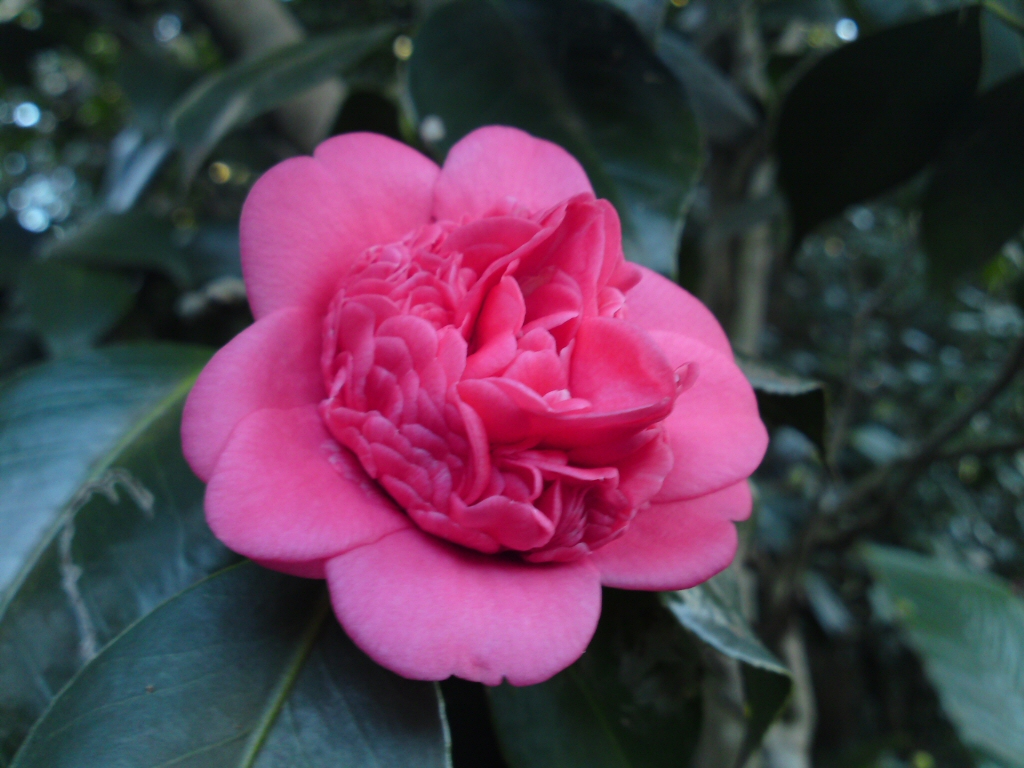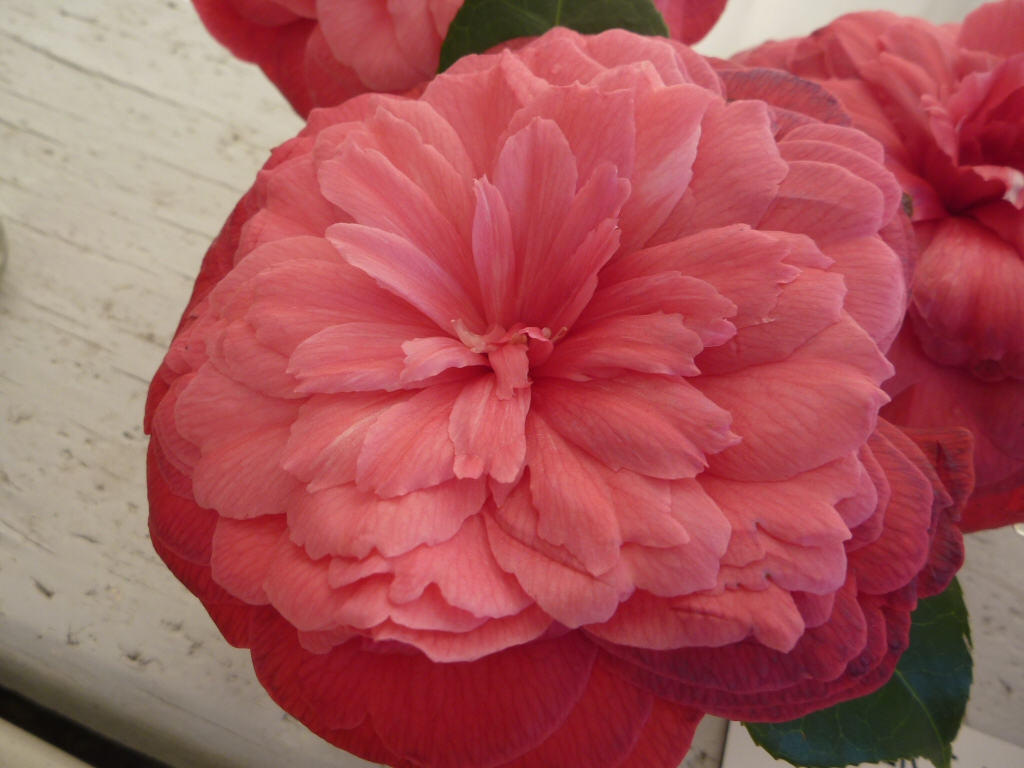Autumn and winter is often a quiet time for flower power in the garden. Camellias are one of the quiet achievers at this time of year, as they are very reliable and remarkably problem free, yet provide a beautiful display of flowers in colours ranging from white to pink and red. This is one of those rare groups of plants that will perform with minimal maintenance.
One of the great delights in the winter garden is the soft carpet of petals underneath a Camellia bush. The flowers are also excellent for indoor decoration where they can be floated in bowls. A further bonus for those with a floristry fetish is that the glossy foliage can be used as a backing for indoor arrangements, giving your shrub a light prune at the same time.
Generally speaking all camellias require reasonable drainage, a slightly acidic soil and fairly high light levels for best flowering. Although they will perform well in full sun, the very best results are obtained when camellias are grown with some protection from the wind and are lightly shaded. Camellias are fairly tolerant of all but the heaviest of frosts and can grow quite happily survive winters in cool climates such as that of Canberra. Adding to the attraction is that they will also thrive in warmer, humid climates such as Sydney equally well.
What are the top varieties of Camellia for the garden?
There are thousands of Camellia varieties that can be split into several groups within the Camellia genus and it is important to choose one below that best suits your purpose.
Camellia sasanqua group
The species Camellia sasanqua occurs naturally in China where plants hundreds of years old are not uncommon. There have been numerous varieties selected within what is perhaps the toughest and fastest growing of all the Camellia species. It has relatively small leaves and flowers but there are lots of them. Sasanquas are suited to growing in a sunny position, as well as shadier ones. It is without doubt the best choice for hedging and screening in the garden especially compact varieties such as ‘Onigoromo’ and ‘Paradise Petite’.
Camellia japonica group
The larger flowers, medium sized glossy leaves and relatively compact habit of this species make it a good choice as a feature shrub. While it is somewhat slower than the sasanquas in its growth it more than makes up for this when it flowers with medium to large blooms in a wide range of forms from single through various multi-petalled varieties. There are hundreds of varieties from which to choose with a couple of beauties being the deep rose-pink ‘Elegans’ or the creamy-white ‘Margaret Davis’.
Camellia reticulata group
The attraction of this rather slow growing Camellia type is its huge flowers, often up to 20cm in diameter. It has large glossy leaves to match the flowers size and in keeping with its larger than life blossoms it also grows into a small tree to 10 metres in height if you are patient. Look out for the flame-red variety ‘Dr Clifford Parks’ or the brilliant pink ‘Flower Girl’
Camellia hybrid group
There are also numerous hybrids between the many camellia species and a number of these are worthy of garden space. A group known as Camellia x williamsii has produced some outstanding compact, free-flowering Camellias such as the orchid-pink ‘Donation’ and the exquisite light pink ‘E.G. Waterhouse’. Another interesting group of hybrids, for example ‘Scentsuous’, has incorporated the perfume of certain Camellia species with the flower size and/or hardiness of the japonicas and sasanquas. The mini hybrid Camellias have smaller flowers in profusion, making for a delightful blossoming effect. Though the flowers are smaller, the plant can still grow to 3-4 metres or more, depending on the variety. Most of the cultivars are best suited to part or dappled shade, though there are some such as Wirlinga Princess that can take higher sun levels.
How do I look after my Camellias?
Once Camellias are established they are able to withstand dry spells very well, but will need some care in their early days after planting to ensure a good root system is formed. Water when the soil is dry, and be sure to water enough for it to penetrate to the deeper layers of the soil. The most common cause of plant failure while they are establishing is to give only enough to wet the top of the soil. Mulching will help protect the new roots from hot summer sun.
Camellias are remarkably free of pests and diseases on the whole, however, it is possible for them to be attacked by aphids, scale insects or caterpillars under rare circumstances. It is best to take samples of damage to your local garden centre where a cure can be recommended. As a rule Camellias will rarely need such attention.
Fertilise them in spring with well-rotted animal manure or one of the specific fertilisers marketed for Camellias and Azaleas. If you are really keen to create a more spectacular floral display it is worthwhile to remove some of the flower buds to increase the size of the remaining flowers when they eventually open. This can be done especially where multiple buds are growing at the same point on a shoot.
Maintenance of Camellias is relatively easy. If you wish for a compact look then prune your plants as they finish flowering in winter or early spring. It is possible to prune them right back to a stump if they are really out of hand, but in most situations trimming ten to twenty percent off the ends of the branches is all that is required to keep them looking neat and tidy. Alternatively, they can be left unpruned if you prefer a more natural look for your garden.



